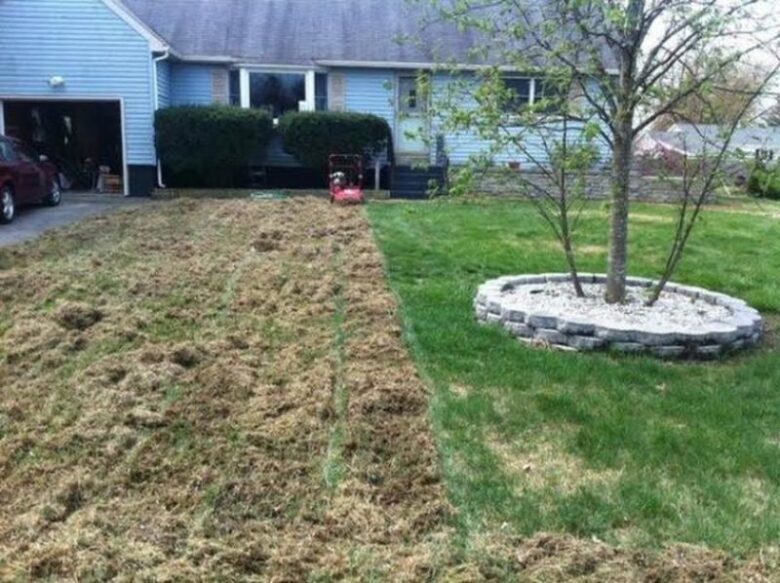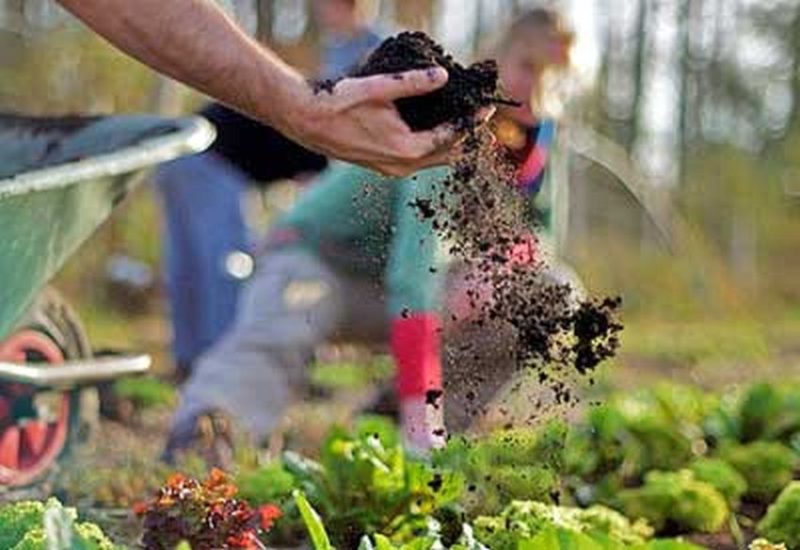Don’t blame yourself if the yard behind your house is not “blessed” with some perfect soil. The truth is that most of us garden in soil that is far less than perfect. If you simply stop gardening it gets neglected and it starts deteriorating. It could become too acidic, or maybe it’s sandy, stony or has too much clay in it.
Turning that kind of soil into a nice, plant-friendly is not a hard thing to do, but you have to learn about soil and its components. Earth has rocks, organic matter (from dead plants and animals), water, and air. However, the secret behind the healthy garden are organisms like worms, some tiny animals, insects, and microbes. If other elements are “spot on” living organisms start flourishing.
Cleaning process

source:nvslandscapes.com
Before you decide to do anything with your “future” garden, you need to clean up the entire backyard. Make a nice working environment and throw away everything you don’t need there. In fact, getting rid of old stuff is always a good idea, because sometimes, you really need to declutter your working/ living space. Just call some of those professional junk removal companies and continue with these 3 steps.
Two Steps to Improve Any Type of Soil:
#1 Adding organic matter is always good for your soil
As I already said, organic matter is the most important ingredient in improving any type of soil. It will act as good drainage for heavy clay, it will make the earth easier to dig and a little bit drier. On the other hand, it will make sandy parts hold together better and retain all that moisture and nutrients it needs.
You can add organic matter by putting everything that came from the earth back to the earth. Think shredded leaves, plant debris, limbs, trees, grass clippings, coffee grounds, paper tower rolls, etc.

source:nvslandscapes.com
You can add all these items directly to the soil, however, that is not the right way to do it.
You can either leave all those items on the ground to rest under a plastic cover during the autumn and winter, or you could just store these items in some bin or in a pile to decompose first. Then, once all that is decomposed, you can go to work.
That is how you make compost you can read more on gardeningstuffs.com. It is the best ingredient for your soil.
And instead of making the compost all by yourself, you can always buy it bagged or in a bulk.
What does it do? Well, when you have too much clay in your soil, this kind of organic matter makes it less dense. That is the only way you can make some space for roots to spread more, to breathe and make way for enough water to stay.
When you have loose soil, water just goes through it and nutrients just disappear. Composite makes those sandy particles stickier and creates greater water and nutrient-holding capacity.

source:nvslandscapes.com
#2 Get your soil tested
A guy from Handy Gardeners advised me to test the soil after it is treated with compost. By doing this test after you add the organic matter you prepared, you can determine the current state of your garden. And this is very important because even if the ground is nutrient efficient the soil chemistry has to be in balance in order to make all the nutrients available. The most important thing you need to find out here is the soil’s pH level.
Most garden soils have a pH somewhere between 5.5 and 8.0.
If the pH level is below 6, it is too acidic and you need to add ground limestone.
If the measurement is above 7.5, the environment is too alkaline for most of your vegetables. Now you need to add some sulfur.

source:nvslandscapes.com

